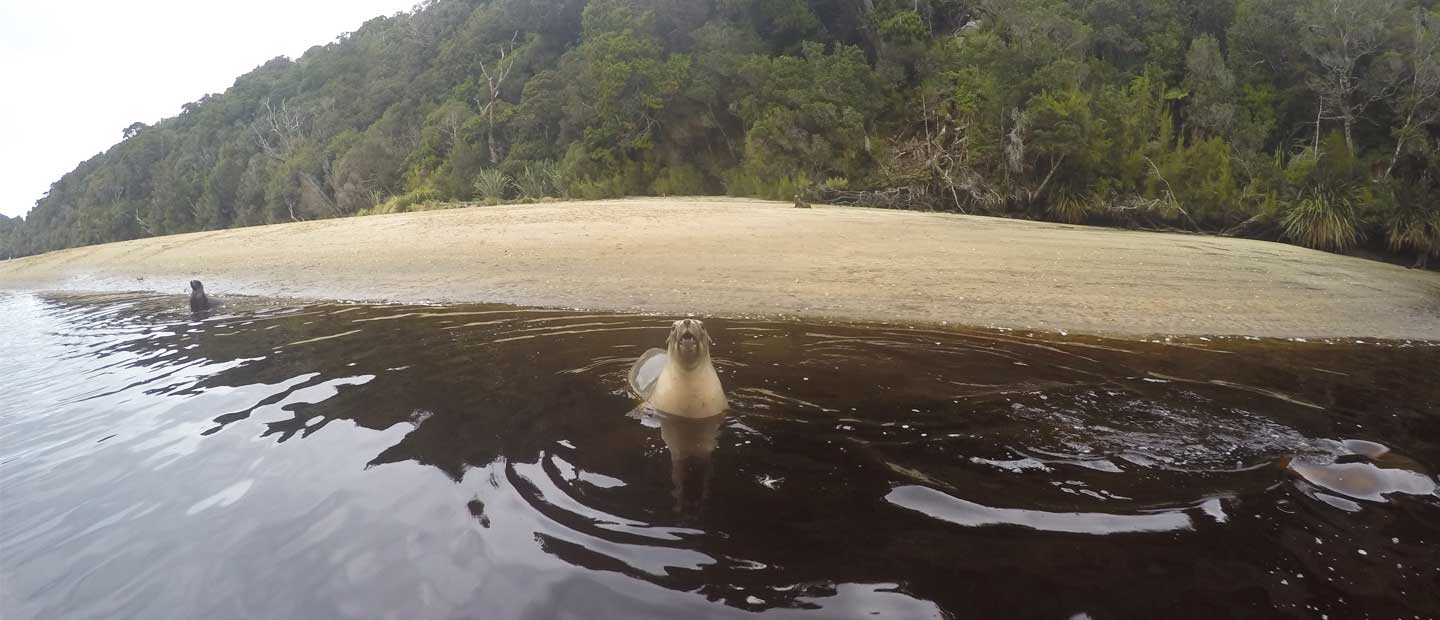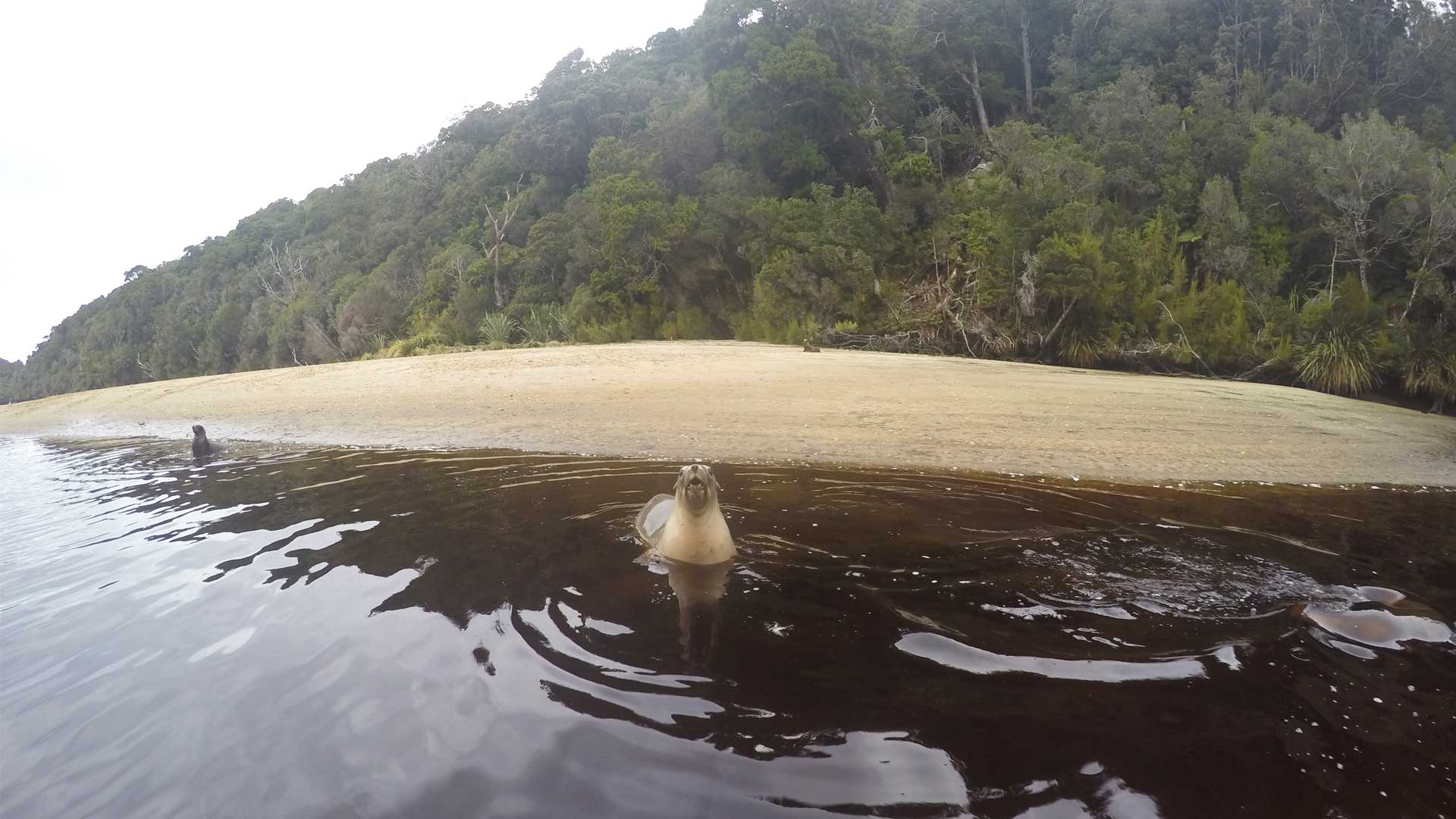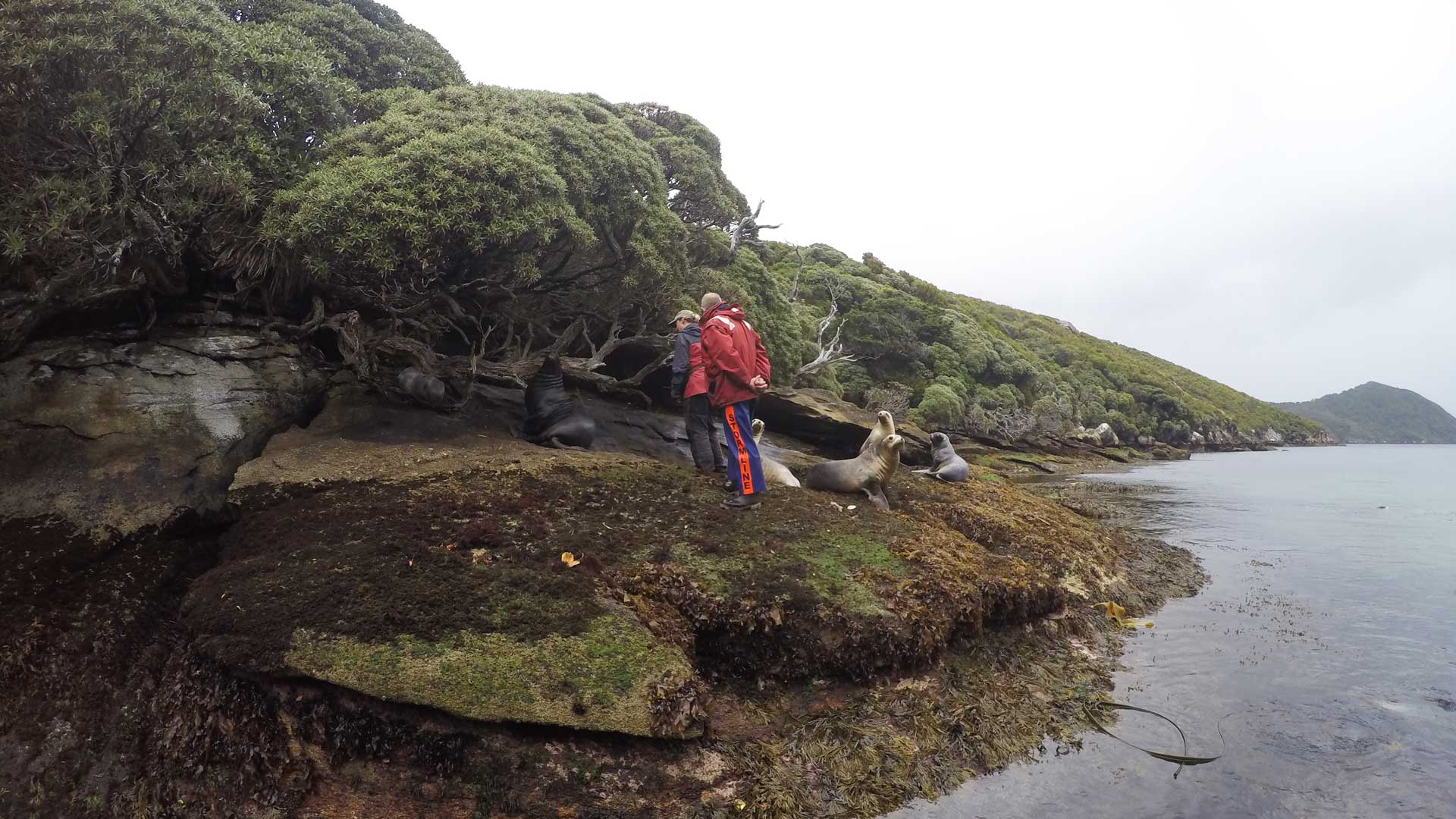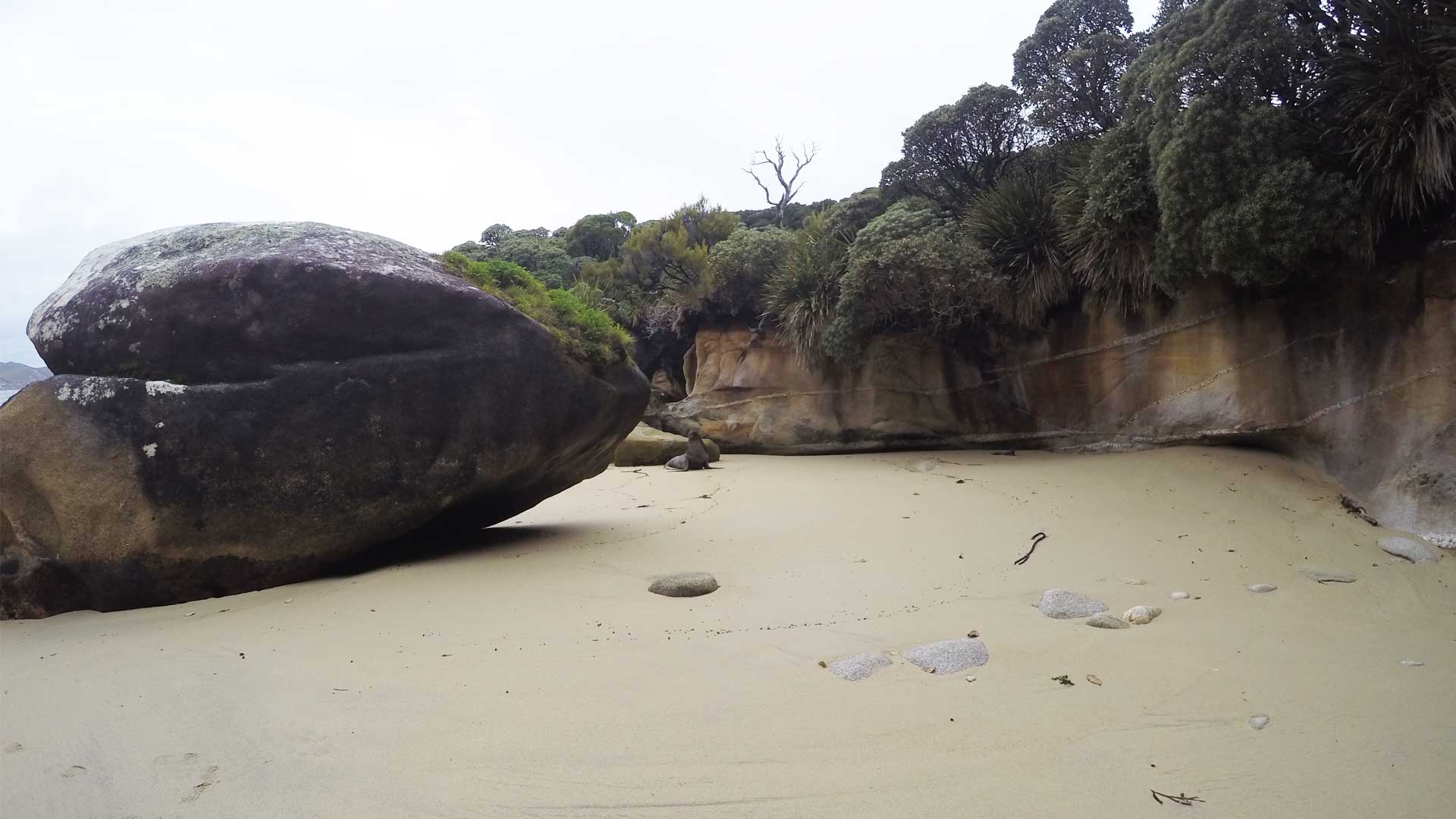At the first light of day, a team comprised of sea lion experts and passionate conservationists, is off on a little boat searching for signs of sea lions. It takes a sharp eye to spot them – looking for signs such as slips or trails, generally leading to a New Zealand sea lion pup having a nap while mum is out getting some fish. Sometimes they bump into mum and even a big impressive male, which is almost like bumping into a sleeping bear with their weights between 200 – 450 kilos. It seems an almost untouched landscape. Teeming with wildlife, brimming with native plants, no signs of other human life. It’s a true haven for these stunning sea lions.
Video
We're giving sea lions a fighting chance!
Follow seals keeper Odin as he heads to Stewart Island with our partners for the annual seal lion pup count
Auckland Zoo seal keeper Odin Neil says it is exhausting and physical work searching for sea lions from dawn until dusk through dense bush, and sometimes it can take hours to find one, but when you do, it is exhilarating. The best part – it’s all in the name of sea lion conservation.
New Zealand sea lions were once on the brink of extinction due to being hunted by early settlers, and have been absent from the New Zealand mainland for over 200 years, with the only large groups mainly found on and around Stewart Island. Threats to sea lions are vast, and major impacts include disease outbreaks and human impact through fishery operations. Trawling vessels operate in the same area as foraging sea lions, and although there are mitigation measures in place, this still leads to inevitable human – sea lion conflict, as they share resources, with sea lions often getting caught in trawl nets as a result. It’s a dire situation for both a female sea lion and her pup, if she were to be killed or die while foraging it would consequentially result in starvation of the recently birthed pup awaiting its mum’s return.
In response to this crisis Auckland Zoo has been supporting New Zealand sea lion research since 2011 – funding GPS tags to be used for ongoing research into the ecology of the species, and working alongside the Department of Conversation (DOC) and Dr Louise Chilvers from Massey University, to undertake an official pup count by means of tagging since 2013.
Around early March each year, this team of experts takes off to Stewart Island on their annual pup tagging trip. Searching for pups is harder than one may think, it all starts on the boat. Odin describes the difficulties of searching the shorelines comprised of extreme terrain, making them difficult to spot. When spotted, the team quietly and quickly park up on the shoreline, split up – then the chase begins. Stumbling through harsh growths, dense plant-life, up and down banks, and slippery terrains unscathed, is a feat in itself - all to tag a young pup that doesn’t know these are the good guys!
“The pups are really quick when they want to be, sometimes heading up steep hills or down them to the water, and on a few occasions I have accidentally ended up in the water with them… but I find it really exciting knowing every pup tagged is a step closer to recognising them as a colony!” Odin said.
Catching and tagging pups is the most stress-free way to prove the existence of a colony. A quick catch and tag is over in minutes, and often the pups will realise they are under no threat and hang around for a while afterwards, and even come up to the team for a curious sniff.
Recognition of a new colony must have a pup production level of at least 35 pups each season for five consecutive years. After five years of tagging New Zealand sea lions in Port Pegasus on Stewart Island, the group is now recognised as a colony. This is a massive feat for New Zealand sea lions as this is the first recognised colony located outside of the Sub-Antarctic islands for over 200 years. With official recognition, more eyes will be on the colony which will hopefully help with the major threat posed by fishery interactions. Encouragingly, already numerous sightings of Stewart Island tagged sea lions have been made on mainland New Zealand, and being able to make the connection between these two populations is hugely significant for the revival of the species.
Auckland Zoo seals keeper OdinI remember at the start of this year’s pup count thinking that we really have to count more pups than last year, so you’re constantly on the search. There’s nothing more rewarding than at the end of a trip when you know you have found and tagged the amount of pups required, and this year completes the five year count recognising the Stewart Island colony, which was the best feeling ever to do this for such a nationally critical species.
“I remember at the start of this year’s pup count thinking that we really have to count more pups than last year, so you’re constantly on the search. There’s nothing more rewarding than at the end of a trip when you know you have found and tagged the amount of pups required, and this year completes the five year count recognising the Stewart Island colony, which was the best feeling ever to do this for such a nationally critical species.”
As a lover of the ocean with a fascination for marine life, working towards resurrecting the sea lion species is incredibly rewarding for Odin. He points out the similarities of his own life, closely matching that of this charming marine mammal.
“I love fishing, and sea lions head out for fish all the time. I surf and these mammals love playing in the waves, and who doesn’t love chilling in the sun at the beach, and again sea lions do a lot of chilling in the sun.”
Odin’s affinity with these beautiful beings drives his desire to contribute to the species, and he has high hopes for sea lions being able to come back to the mainland one day and have a chance at doing all of these things without the current threats and risks.
“They used to spread much further, with evidence of them from Fiordland to East Otago, Cook Strait, South Taranaki, and from the Coromandel Peninsula to Northland. We are just so incredibly lucky they haven’t become extinct, we should feel very privileged to have such amazing animals back on New Zealand mainland if and when that day ever comes,” Odin concludes.
How you can help:
- Donate to Auckland Zoo’s Wild Work (So we can keep doing this important conservation work!)
- Learn more from our friends at the Department of Conservation (DOC) about Aotearoa’s sea lions
- Learn from DOC about their main threats
- Learn how you can take action







